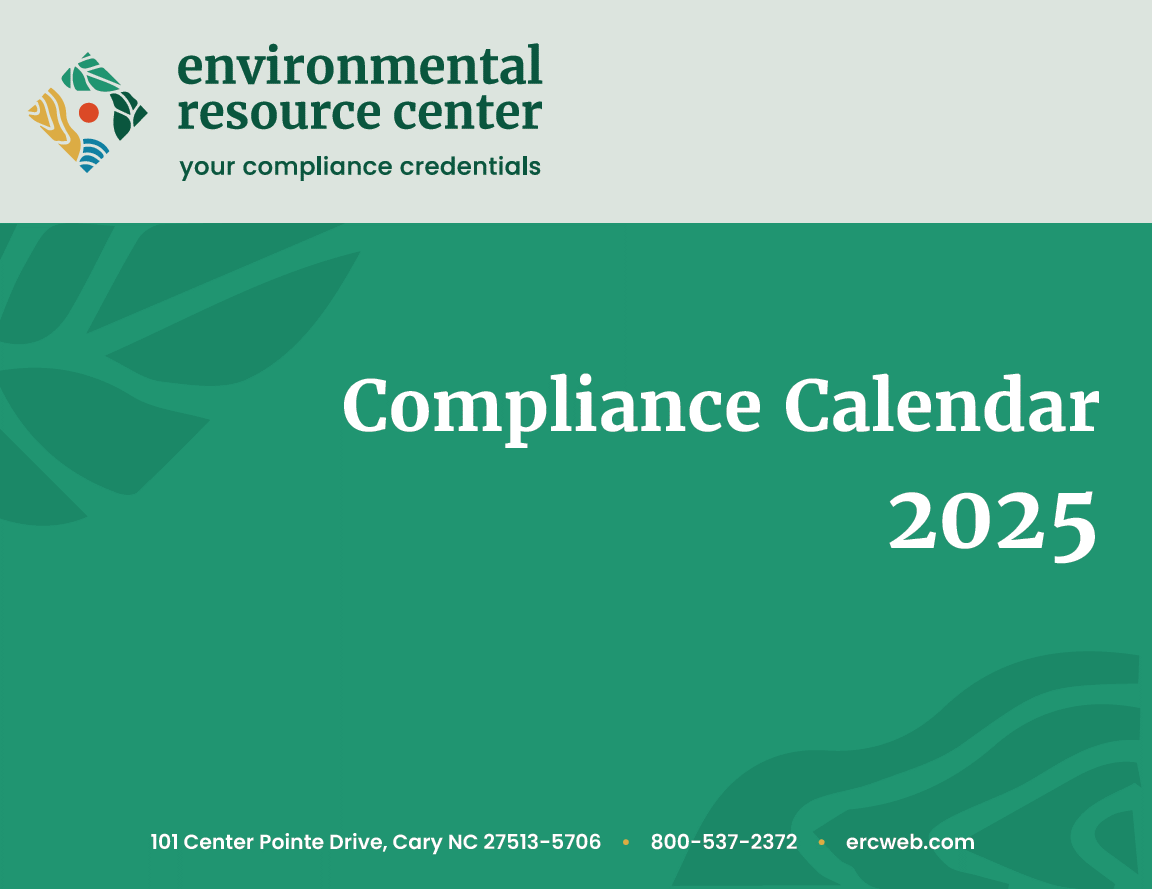 Inhalation exposure to 1,1-dichloroethane presents an “unreasonable risk of injury to the health of workers,” according to EPA’s final risk evaluation of the chemical. 1,1-Dichloroethane is used mainly as an industrial and commercial solvent, to make other chlorinated solvents and other substances, and in small amounts for laboratory research, the agency says. Three conditions of use identified by EPA “significantly contribute” to 1,1-dichloroethane’s unreasonable risk to workers’ health. Two of those uses have to do with processing 1,1-dichloroethane as a reactant—both as an intermediate in basic organic chemical manufacturing and in other chemical product and preparation manufacturing, and the third use involves recycling.
Inhalation exposure to 1,1-dichloroethane presents an “unreasonable risk of injury to the health of workers,” according to EPA’s final risk evaluation of the chemical. 1,1-Dichloroethane is used mainly as an industrial and commercial solvent, to make other chlorinated solvents and other substances, and in small amounts for laboratory research, the agency says. Three conditions of use identified by EPA “significantly contribute” to 1,1-dichloroethane’s unreasonable risk to workers’ health. Two of those uses have to do with processing 1,1-dichloroethane as a reactant—both as an intermediate in basic organic chemical manufacturing and in other chemical product and preparation manufacturing, and the third use involves recycling.“These risk determinations do not reflect the use of [personal protective equipment],” EPA’s news release explains. “[H]owever, as the risk evaluation shows, effective use of PPE in a manner that achieves a minimum APF 10 to 25 will reduce exposures and mitigate risk in the absence of other exposure controls (e.g., engineering controls).”
EPA finds that 1,1-dichloroethane’s use in manufacturing as an isolated intermediate, its distribution in commerce, and its commercial use in laboratory chemicals do not contribute significantly to the agency’s determination of unreasonable risk. Similarly, the agency says that repackaging and disposal of 1,1-dichloroethane do not add to the risk to workers’ health.
Given the inadequate data available on 1,1-dichloroethane, EPA used 1,2-dichloroethane, a chemical primarily used to produce vinyl chloride, as an analog for its human health hazard assessment.
“Based on the evidence in 1,2-dichloroethane animal studies, EPA believes that repeated inhalation exposure to 1,1-dichloroethane in workers over a lifetime can cause cancer,” the agency explains in a summary (PDF) of its risk evaluation.
EPA next plans to take risk management steps, including the proposal of a rule under section 6 of the Toxic Substances Control Act.
 The EPA announced a settlement with Ecolab, Inc. for alleged Resource Conservation and Recovery Act (RCRA) violations at the company’s facility at 3000 Channahon Road, Joliet, Illinois. Ecolab has addressed the alleged violations and will pay a $423,308.60 penalty.
The EPA announced a settlement with Ecolab, Inc. for alleged Resource Conservation and Recovery Act (RCRA) violations at the company’s facility at 3000 Channahon Road, Joliet, Illinois. Ecolab has addressed the alleged violations and will pay a $423,308.60 penalty. "The first pillar of EPA’s Powering the Great American Comeback initiative is clean air, land and water for every American,” said EPA Region 5 Administrator Anne Vogel. “EPA is devoted to protecting communities like Joliet from the threats posed by improper and unregulated hazardous waste storage."
Ecolab sells programs, products, equipment and services to help clean and treat wastewater. The company has failed to comply with certain RCRA regulations during its business operations, including the failure to:
- Obtain a permit, or interim status, for hazardous waste storage
- Comply with hazardous waste storage tank requirements
- Comply with container management requirements
- Comply with contingency plan requirements
- Maintain documentation for waste determinations and training
Ecolab has certified its return to compliance with RCRA regulations. RCRA is the nation’s primary law governing the management of solid and hazardous waste to protect human health and the environment.
 NIOSH has published a fact sheet informing workers on how to identify counterfeit and misrepresented respirators and cartridges (PDF). OSHA requires workers who need respiratory protection to use respirators approved by NIOSH. The agencies’ approval standards ensure the devices meet necessary safety and performance metrics for use in workplaces, the fact sheet explains. But many respirators, filters, and cartridges available for purchase on third-party marketplaces are counterfeit products copying a NIOSH-approved model or misrepresented products falsely marketed and sold as NIOSH-approved devices. Counterfeit and misrepresented respirators, filters, and cartridges may not provide the advertised level of protection.
NIOSH has published a fact sheet informing workers on how to identify counterfeit and misrepresented respirators and cartridges (PDF). OSHA requires workers who need respiratory protection to use respirators approved by NIOSH. The agencies’ approval standards ensure the devices meet necessary safety and performance metrics for use in workplaces, the fact sheet explains. But many respirators, filters, and cartridges available for purchase on third-party marketplaces are counterfeit products copying a NIOSH-approved model or misrepresented products falsely marketed and sold as NIOSH-approved devices. Counterfeit and misrepresented respirators, filters, and cartridges may not provide the advertised level of protection.The fact sheet instructs readers to identify labels and markings that indicate their respirator, filter, or cartridge is a NIOSH-approved model. The NIOSH approval label, located on the facepiece or straps of filtering facepiece respirators, informs users of the device’s testing and certification (TC) number. Users may search their device’s TC number on NIOSH’s Certified Equipment List to confirm the approval is valid. Respirators approved by NIOSH also bear the name or logo of the approval holder, the device’s model or part number, and the NIOSH acronym in capital block letters, as well as the filter series and efficiency rating, such as N95. Lot numbers are recommended but not required. NIOSH-approved filters and chemical/filter cartridges are also clearly marked with the name of the approval holder, part number, NIOSH acronym, protection type or filter series, and lot number.
NIOSH encourages readers to purchase respirators, filters, and cartridges from authorized distributors instead of third-party marketplaces or unfamiliar websites. The agency lists tips that help readers avoid purchasing counterfeit or misrepresented devices. For example, buyers should be skeptical of claims that a device is “legitimate” or “genuine,” approved for use by children, or—in the case of filters and cartridges—compatible with NIOSH-approved respirators. The fact sheet provides instructions for reporting counterfeit or misrepresented devices to NIOSH.
 U.S. Environmental Protection Agency (EPA) is encouraging businesses, schools, and other small facilities to double-check how they handle hazardous waste to avoid costly violations.
U.S. Environmental Protection Agency (EPA) is encouraging businesses, schools, and other small facilities to double-check how they handle hazardous waste to avoid costly violations.In recent years, EPA Region 2 has found that many facilities are unknowingly violating federal hazardous waste rules. A common issue is shipping regulated amounts of hazardous waste without first obtaining the required EPA identification number. These mistakes often stem from confusion about how much hazardous waste a facility generates and what that means for compliance.
“Many of these violations stem from misunderstanding, not malice,” said Regional Administrator Michael Martucci. “We want to make sure businesses understand their legal obligations and take proactive steps to handle hazardous waste properly. It’s about protecting human health and the environment — and helping companies avoid costly mistakes.”
To address this, EPA has worked with dozens of facilities across New York, New Jersey, Puerto Rico, and the U.S. Virgin Islands through Expedited Settlement Agreements (ESAs) - a tool that helps businesses fix the problem quickly and return to compliance with minimal penalty.
“If you run a small business, you may be generating more hazardous waste than you think,” continued Regional Administrator Martucci. “We’re here to help you get it right, because the rules protect both your workers and your community.”
The rules apply to any facility that generates hazardous waste, including:
- Used paint, solvents, or thinners
- Expired lab or cleaning chemicals
- Disinfectants and sterilants
- Waste from auto work, art programs, or health services
When a facility generates more than 100 kilograms (approximately 220 pounds) of hazardous waste in a month, it must notify EPA and comply with additional handling and shipping regulations. Many facilities—such as auto shops, dental and medical clinics, printers, schools, and laboratories—may unknowingly exceed this threshold. Even facilities that generate less than 100 kilograms of hazardous waste per month are subject to specific requirements. A summary of these requirements is available here.
EPA encourages facilities to:
- Check how much hazardous waste they generate monthly
- Apply for EPA ID numbers using EPA Form 8700-12 if you generate more than 100 kilograms (about 220 pounds) of hazardous waste in a month.
- Follow storage, labeling, and disposal rules based on generator category
- Use EPA’s online guidance to stay informed and in compliance
These steps help avoid enforcement actions and protect your business, employees, and environment.
Need help with your hazardous waste questions? Watch our YouTube series: What are the RCRA requirements for SQGs?
 The National Institutes of Health (NIH) launched a five-year, $10 million research initiative to assess and address the long-term health outcomes stemming from the 2023 train derailment in East Palestine, Ohio.
The National Institutes of Health (NIH) launched a five-year, $10 million research initiative to assess and address the long-term health outcomes stemming from the 2023 train derailment in East Palestine, Ohio.On Feb. 3, 2023, a Norfolk Southern freight train derailment involving 38 cars carrying hazardous chemicals—including vinyl chloride, butyl acrylate, ethylene glycol, and benzene residue—resulted in prolonged fires and controlled burns in East Palestine. Following the derailment, several railcars burned for more than two days, and emergency responders conducted controlled burns which raised concerns about the airborne release of hydrogen chloride and phosgene.
Community members experienced and reported a range of initial health symptoms—including headaches as well as respiratory, skin, and eye irritations—prompting concern about broader long-term impacts on maternal and child health as well as psychological, immunological, respiratory, and cardiovascular effects.
“NIH is working to ensure that the people of East Palestine and the surrounding communities are listened to, cared for, and get the answers they deserve,” NIH Director Jay Bhattacharya said. “This multi-disciplinary research program will focus on public health tracking and surveillance of the community’s health conditions to support health care decisions and preventive measures.”
The multi-disciplinary, community-focused series of studies that will focus on:
- Longitudinal epidemiological research to understand the health impacts of exposures on short- and long-term health outcomes including relevant biological markers of risk.
- Public health tracking and surveillance of the community’s health conditions to support health care decisions and preventive measures.
- Extensive, well-coordinated, communications among researchers, study participants, community stakeholders, health care providers, government officials, and others to establish a comprehensive approach to address the affected communities’ health concerns.
Technical details, application information, and other background material to the public were released today. It is expected that a series of grants will be issued to analyze various types of studies and community activities. The deadline to submit research proposals is July 21. Research projects to start this fall.
 The Candidate List of substances of very high concern (SVHC) now contains 250 entries for chemicals that can harm people or the environment. Companies are responsible for managing the risks of these chemicals and giving customers and consumers information on their safe use.
The Candidate List of substances of very high concern (SVHC) now contains 250 entries for chemicals that can harm people or the environment. Companies are responsible for managing the risks of these chemicals and giving customers and consumers information on their safe use.Two newly added substances are very persistent and very bioaccumulative. They are used, for example, in cosmetics, personal care products and in automotive care products. One substance is toxic for reproduction and is used in textile treatment products and dyes.
Entries added to the Candidate List on 25 June 2025:
|
Substance name
|
EC number
|
CAS number
|
Reason for inclusion
|
|
1,1,1,3,5,5,5-heptamethyl-3-[(trimethylsilyl)oxy]trisiloxane
|
241-867-7
|
17928-28-8
|
Very persistent and very bioaccumulative, vPvB (Article 57e)
|
|
Decamethyltetrasiloxane
|
205-491-7
|
141-62-8
|
Very persistent and very bioaccumulative, vPvB (Article 57e)
|
|
Tetra(sodium/potassium) 7-[(E)-{2-acetamido-4-[(E)-(4-{[4-chloro-6-({2-[(4-fluoro-6-{[4-(vinylsulfonyl)phenyl]amino}-1,3,5-triazine-2-yl)amino]propyl}amino)-1,3,5-triazine-2-yl]amino}-5-sulfonato-1-naphthyl)diazenyl]-5-methoxyphenyl}diazenyl]-1,3,6-naphthalenetrisulfonate; Reactive Brown 51
|
466-490-7
|
-
|
Toxic for reproduction (Article 57c)
|
The list now contains 250 entries – some are groups of chemicals, so the overall number of impacted chemicals is higher.
These substances may be placed on the Authorisation List in the future. If a substance is on this list, companies cannot use it unless they apply for authorisation and the European Commission authorises its continued use.
Under REACH, companies have legal obligations when their substance is included – either on its own, in mixtures or in articles – in the Candidate List.
If an article contains a Candidate List substance above a concentration of 0.1 % (weight by weight), suppliers have to give their customers and consumers information on how to use it safely. Consumers have the right to ask suppliers if the products they buy contain substances of very high concern.
Importers and producers of articles have to notify ECHA if their article contains a Candidate List substance within six months from the date it has been included in the list (25 June 2025).
EU and EEA suppliers of substances on the Candidate List, supplied either on their own or in mixtures, have to update the safety data sheet they provide to their customers.
Under the Waste Framework Directive, companies also have to notify ECHA if the articles they produce contain substances of very high concern in a concentration above 0.1 % (weight by weight). This notification is published in ECHA’s database of substances of concern in products (SCIP).
Under the EU Ecolabel Regulation, products containing SVHCs cannot have the ecolabel award.
News Links
Trivia Question of the Week



